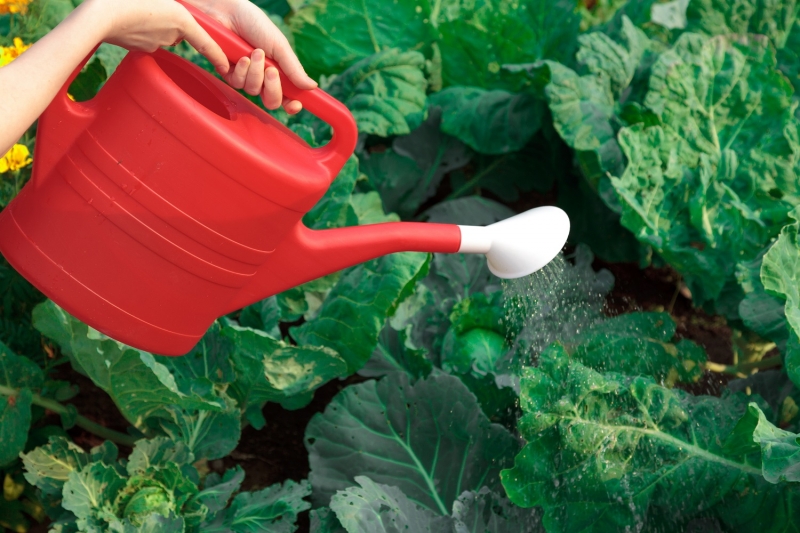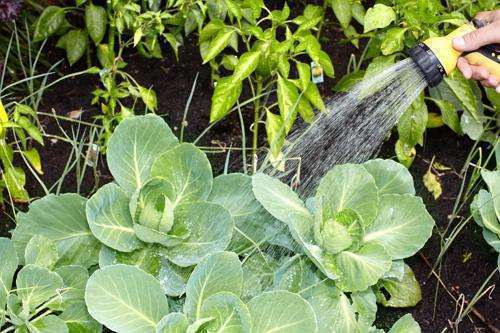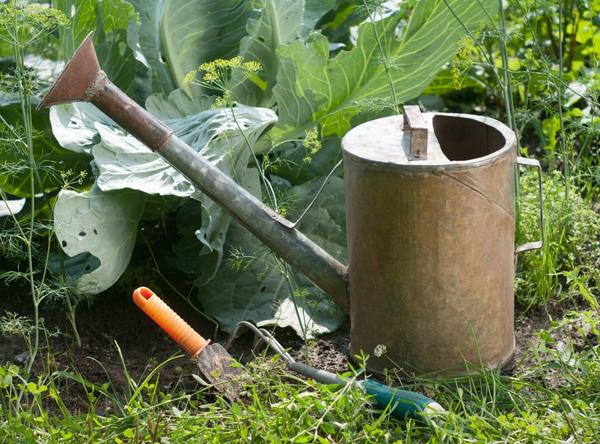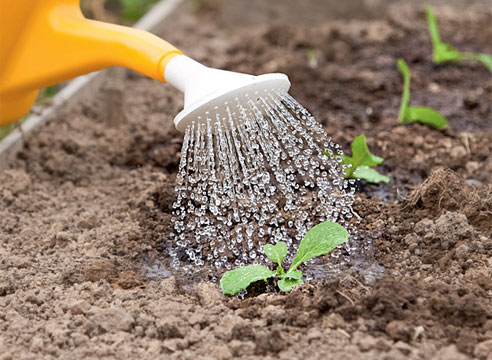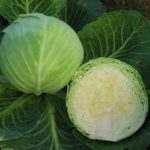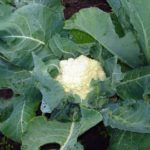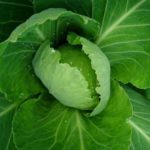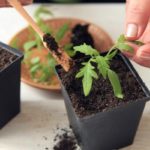There are different opinions among gardeners about how often to water cabbage in open ground. After all, due to excessive humidity, the heads of cabbage crack, may burst, and the lower leaves turn yellow and rot. For the active growth and health of a vegetable crop, the temperature of the water for irrigation is also important.
It is known that without knowing the rules for watering cabbage in open ground, you cannot get a good vegetable harvest. And here everything is important: the method of watering, its time and water temperature. If you water according to the rules, then the heads of cabbage in the fall will delight you with juiciness and strength. They will not rot or crack.
Ways to water cabbage
After planting young cabbage bushes in open ground, organize regular watering of the vegetable. There are several ways to rationally carry out the procedure:
- The grooves made along the vegetable plantings will allow the roots of the plant to be evenly saturated with moisture. The advantage of this method is that each bush will receive enough water. Irrigation is usually used for plants with a developed root system. The grooves will firmly conduct water on flat areas with dense, heavy soil.
- It is easy to regulate the watering rate when using the sprinkling method. To do this, water flows through a hose into a special installation that sprays water over the cabbage beds. The convenience of the method lies in the minimum expenditure of effort, but the maximum expenditure of electricity. In addition, the heads of cabbage will only be refreshed with cold water, which is not always beneficial for them.
- An effective type of irrigation is drip irrigation. You can arrange it by selecting and laying pipes with a diameter of one and a half to two centimeters. The holes in them for releasing water are located at a distance of thirty centimeters from each other. Regulate watering using medical droppers. Many people use simple plastic bottles that are dug between the rows of garden crops. Through the holes made, the roots are supplied with moisture. The drip irrigation method is used as one of the most cost-effective. It will prevent the soil from becoming waterlogged and will deliver water to every root.
When organizing irrigation, it is important to know that the average watering rate for early varieties, when the forks have not yet set, is five liters per square meter, during ripening - eight. For late varieties the norm is one and a half times higher.
The depth of soaking after planting cabbage depends on the period of cabbage formation.Before this, you need to water to a depth of up to thirty centimeters, and with active formation of forks - up to forty.
Watering schedule and frequency
If it is not clear why the cabbage is cracking, then you need to reconsider the frequency of watering and adjust the procedure schedule. The moisture requirement of a vegetable is determined by such parameters as the age of the plant and the variety of cabbage.
You can adjust the moistening procedure, knowing that you water every day before the heads set and during their formation. Usually moisten up to two times a day when planting seedlings. In this case, weather and climatic conditions are taken into account.
In temperate climates, five to six waterings per week are sufficient, in regions with hot climates - up to eleven. For all varieties of vegetables, the duration of irrigation by sprinkling should be up to three hours after planting, and during the formation of heads of cabbage - two hours.
Irrigation should be stopped two to three weeks before harvest, and for late varieties – a month.
The stability of moisture supply plays an important role in the development of the plant. If they don’t know how to water cabbage and with what frequency, then the vegetable will not receive sufficient moisture. Lack of watering, even for some time, leads to stagnation in the development of the middle heads of cabbage. And the establishment of abundant moisture leads to active growth of inner leaves and rupture of outer ones. Hence the cracks on cabbage heads.
The number of times to water cabbage beds is adjusted depending on the availability of precipitation and soil composition.
The intensity of water absorption is different for each type of soil. You can determine the type of soil by rolling a ball out of it. If, when pressed, the earthen ball disintegrates, then it is loam. Then you need to water often. If it does not crumble, then cabbage grows on heavy soils. Moisture is absorbed for a long time, so you should not be zealous in watering.It will not be possible to roll a ball out of sandy soil. Such soils easily absorb any liquid.
Water requirements for watering cabbage
An important point in caring for vegetables is what kind of water to water the cabbage with. And there are no special secrets here. It is best warm and settled. To do this, containers are filled with water in advance. To make them heat up better, they are painted dark. The optimal water temperature for irrigation should be at least eighteen degrees and not higher than twenty-five. Excessive overheating of the liquid can cause the heads of cabbage watered with it to burst. This happens if the difference between the temperature of water and air is ten degrees.
The sprinkling method, that is, watering with cool water on hot days, is unacceptable. Then the forks crack severely, which will subsequently lead to their rotting. The situation can be corrected by turning on the unit earlier in the morning.
Useful additives for watering
Feeding cabbage is carried out during watering. Useful procedures begin immediately after planting vegetable seedlings in the ground. Having dissolved five hundred grams of mullein in a bucket of water, water the seedlings at the roots two weeks after planting. Chicken manure is also used, diluted in a ratio of 1:15. During watering, make sure that organic matter does not get on the leaves. Even a few drops of the solution on the leaves of the plant will cause a burn.
Among mineral fertilizers, superphosphate, potassium salt, and ammonium nitrate are considered useful for the plant. The substances are also diluted in ten liters of water, first taking fifteen to twenty grams, in subsequent feedings - twice as much.
For planting vegetables, such watering with fertilizers two to three times per season is sufficient.
The richest source of nitrogen, potassium, and phosphorus is nettle. Infuse the cut stems of the plant in water until the solution ferments. After watering with nettle infusion, cabbage grows more intensively, a head of cabbage forms quickly and does not burst.
For late-ripening varieties of vegetable plants, it is useful to spray the leaves from above with the following solution: a kilogram of potassium chloride is diluted in four liters of water, eighty grams of superphosphate, ten grams of molybdenum. After steeping for 24 hours, the heads of cabbage are sprayed. In case of weakness or yellowing of the shoots, add two grams of urea to the solution. After foliar feeding, there will be no problem why the cabbage ripens slowly and the heads of cabbage crack.
Basic rules for watering vegetables
If the cabbage in the garden is cracking for some reason, you need to remember the basic rules of watering:
- After planting the seedlings, the period of head formation is watered daily in the morning and evening. In rainy weather, you can reduce the frequency to once every two to three days.
- One to two liters of water are poured under the root of each bush.
- To prevent moisture from evaporating, cover the heads of cabbage with newspaper on hot days.
- To better retain moisture in the soil, we will hill up the bushes.
- Stagnation of water is dangerous for the plant. Staying in water for ten hours is fraught with rotting of the roots and the death of the garden crop.
- To prevent cabbage from cracking, it must be watered regularly, avoiding excessive waterlogging.
- It is impossible to water abundantly after a long drought, as the heads of cabbage will crack.
- A few hours after moistening, the soil around the bushes is loosened, removing the dry crust.
- After hilling the vegetable, the amount of watering is reduced.
- If the hot weather season gives way to a period of heavy rains, then you need to lightly trim the roots of the vegetable, which will reduce their absorption of moisture. Then the problem of why cabbage cracks will disappear.
There are many types of cabbage, and each of them has different watering requirements.
How to water different types of cabbage
When people talk about cabbage, they often mean white cabbage. It is a popular, healthy type of vegetable. The formation of light green heads of cabbage is effective if watering is properly organized, to a depth of up to forty centimeters. It is reduced only twenty days before harvesting the fruits.
Red cabbage is considered an unpretentious, drought-resistant plant. The reason for its resistance is the well-developed root system of the vegetable crop. But still, the plant is watered intensively during the period of formation of dark red forks.
In broccoli, the roots lie close to the surface, and the heads form quickly. They need quality hydration. The soil is poured forty centimeters deep. After watering, be sure to loosen the rows in order to remove the crust that has formed on the ground.
For cauliflower, it is important that the soil is always moist. The heads will not set if the soil dries out. The plant needs ten liters of water per week.
Kohlrabi and Brussels sprouts are given regular watering. Dry soil in the garden will lead to cracking of the stems.
Moderation of watering and reasonable frequency will allow the Beijing type of vegetable to form forks efficiently. It is useful for the plant to have a shower with warm water. The sprinkling method will also eliminate cruciferous flea beetles.
Compliance with the rules of agricultural technology when growing vegetables plays a big role in obtaining high yields. For moisture-loving crops, regular, high-quality, competent watering is important.If you know how to water cabbage correctly, then high yields of strong, juicy heads of cabbage are guaranteed. The plant will be healthy, since the density of the plugs, which do not crack, will not allow infection to get inside.

